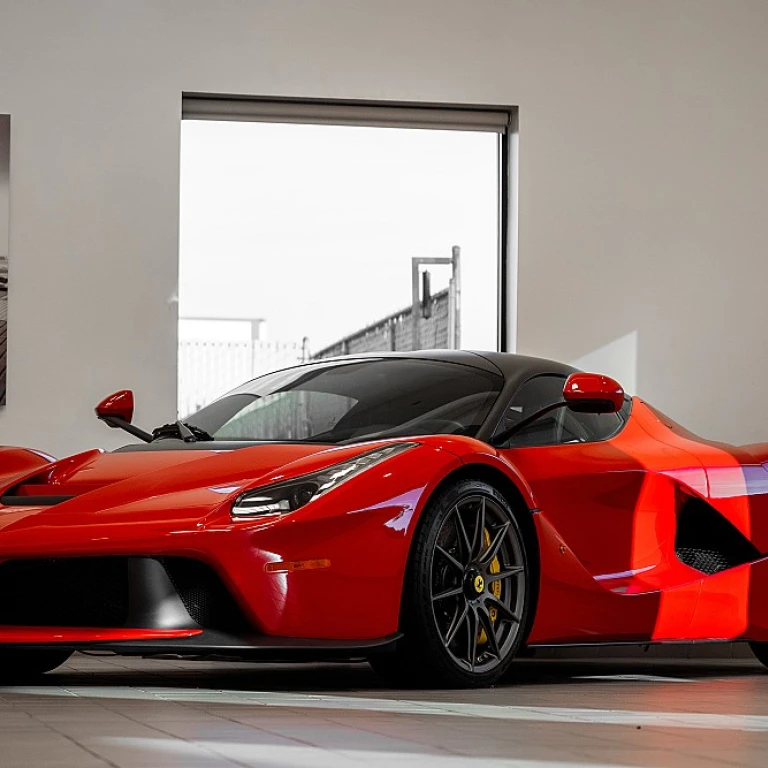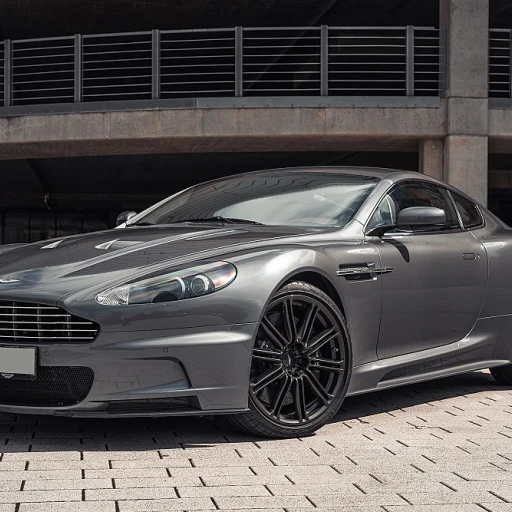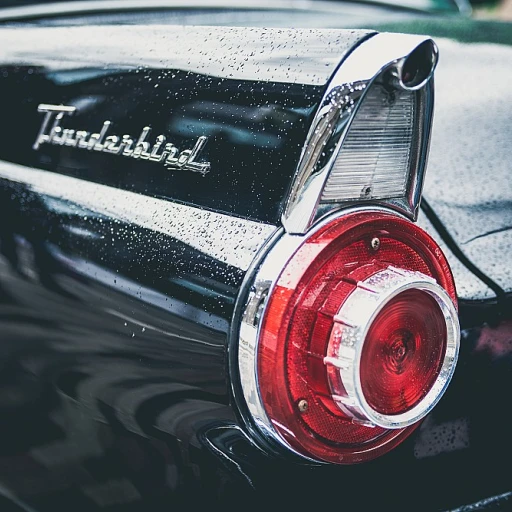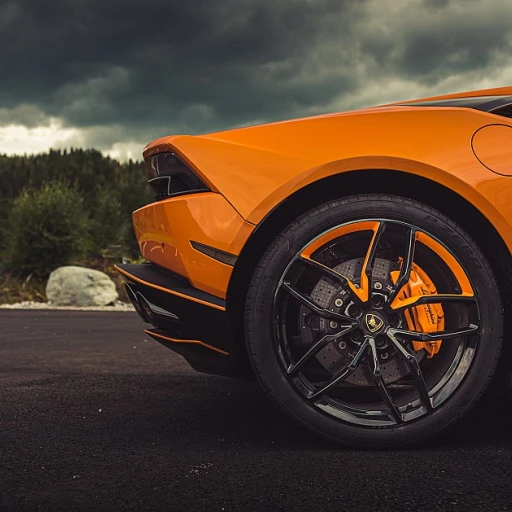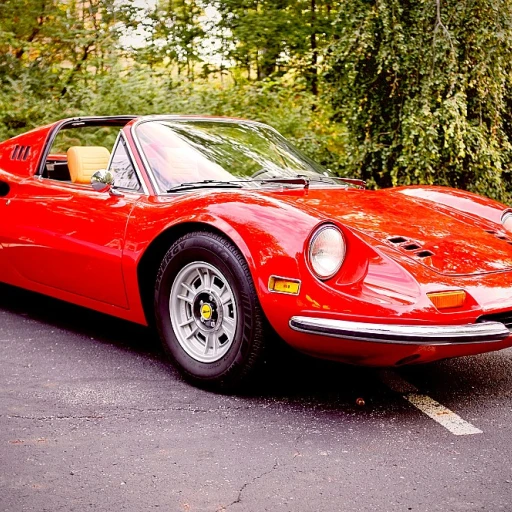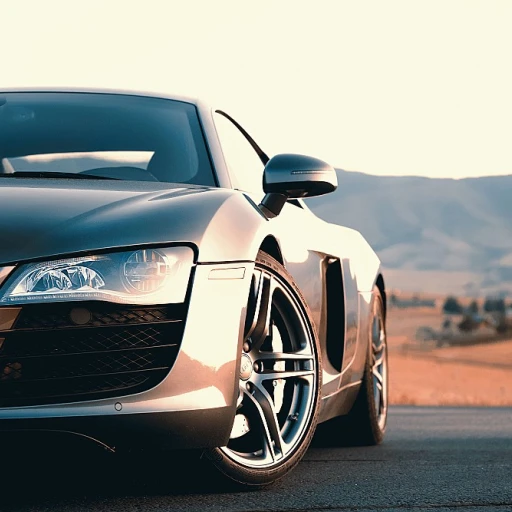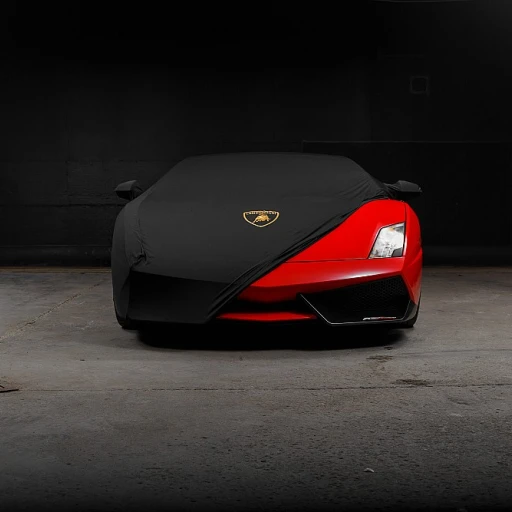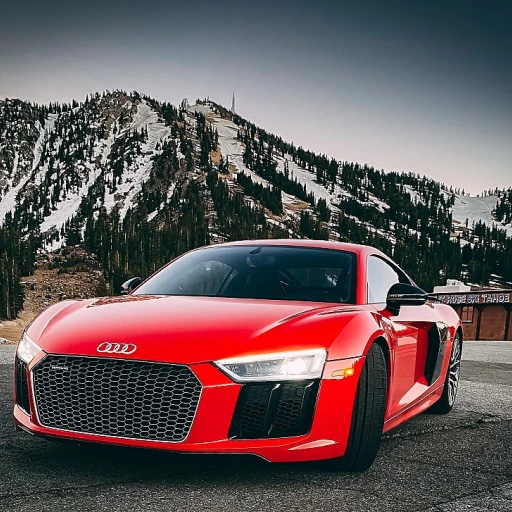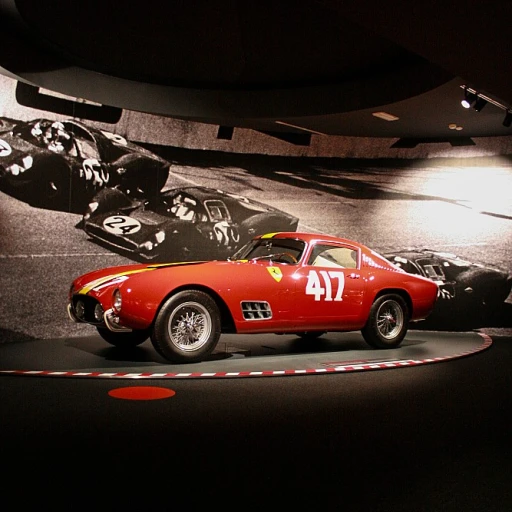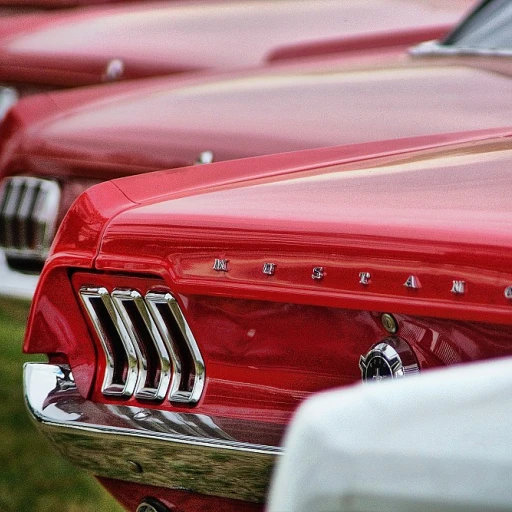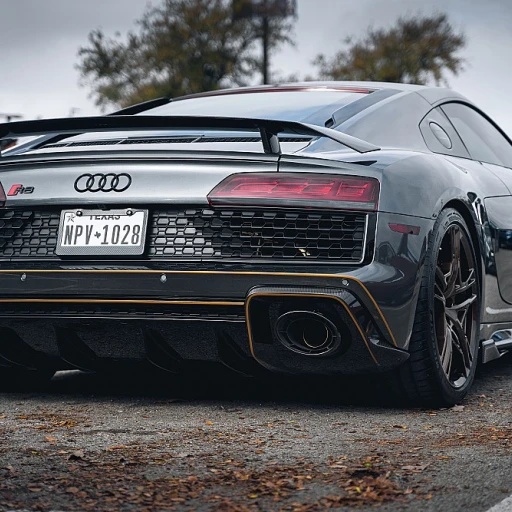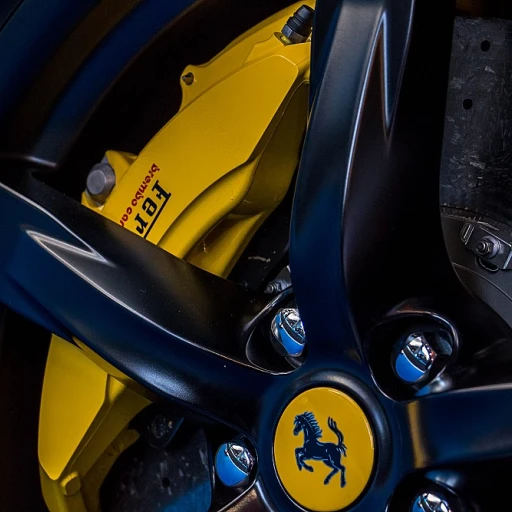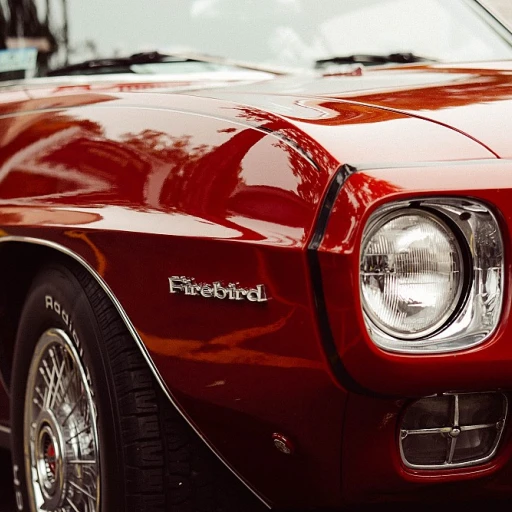
Why the 90s redefined sports car luxury
The Decade That Changed the Game
The 1990s marked a turning point for sports car luxury, blending raw performance with refined comfort in ways that still influence the market today. This era saw the rise of legendary cars like the Nissan Skyline, Toyota Supra, Porsche 911 Turbo, and the Mercedes Benz SL, each pushing the boundaries of what a sports car could deliver. The combination of advanced engine technology, innovative design, and a focus on driving pleasure set a new standard for both speed and sophistication.
- Engines ranged from high-revving naturally aspirated units to powerful twin turbo setups, delivering impressive bhp and torque figures.
- Top speed and acceleration became benchmarks, with many models achieving 0-60 mph times in under five seconds and top speeds well above 150 mph.
- Manufacturers like Aston Martin and Lotus Elise introduced lightweight chassis and advanced suspension systems, enhancing both performance and comfort.
What truly set the 90s apart was the balance between everyday usability and thrilling performance. Cars like the 3.0 liter inline engine Toyota Supra or the 3.6 liter Porsche Turbo offered speed and reliability, while the Nissan Skyline’s all-wheel drive system and advanced electronics hinted at the future of sports cars. The best models from this era remain highly sought after, not just for their speed mph or bhp rpm numbers, but for the unique driving experience they offer.
For those passionate about rare and exclusive vehicles, exploring the exclusivity of owning a Lotus Evija provides a modern perspective on the legacy started in the 90s. The spirit of innovation, power, and style that defined that decade continues to inspire today’s luxury sports car market.
Iconic models that shaped an era
Defining Legends of the 90s Sports Car Scene
The 1990s were a golden era for sports cars, with manufacturers pushing the limits of performance, design, and technology. This decade saw the rise of models that not only set new benchmarks for speed and power but also became icons of automotive culture. Let’s look at some of the standout cars that shaped this unforgettable era.- Porsche 911 (993) – The last of the air-cooled 911s, the 993 generation is revered for its naturally aspirated engine, rear wheel drive, and timeless silhouette. With a 3.6-liter engine delivering up to 282 bhp at 6100 rpm, the 993 could sprint from 0 to 60 mph in just over 5 seconds, reaching a top speed of 168 mph. Its blend of performance and everyday usability made it a favorite among enthusiasts.
- Nissan Skyline GT-R (R34) – The R34 Skyline GT-R became a legend thanks to its advanced all-wheel drive system and the RB26DETT 2.6-liter twin turbo inline engine. With 276 bhp and 293 lb-ft of torque, it could accelerate from 0 to 60 mph in about 4.9 seconds. Its sophisticated technology and tuning potential have made it a cult classic in the sports car world.
- Toyota Supra (A80) – The fourth-generation Supra is famous for its 3.0-liter inline six twin turbo engine, producing up to 320 bhp and 315 lb-ft of torque. With a 6-speed manual transmission, the Supra could reach 60 mph in 4.6 seconds and a top speed of 155 mph. Its robust engine and tuning capability have cemented its status as one of the best sports cars of the decade.
- Lotus Elise – Lightweight and agile, the Lotus Elise redefined what a sports car could be. Its 1.8-liter engine may seem modest, but with a curb weight under 900 kg, it delivered exceptional handling and a pure driving experience. The Elise’s focus on simplicity and performance made it a standout for those who value driver engagement over raw power.
- Mercedes-Benz SL600 (R129) – Combining luxury and performance, the SL600 featured a 6.0-liter V12 engine producing 389 bhp and 420 lb-ft of torque. It could accelerate from 0 to 60 mph in just 5.9 seconds, offering a refined yet thrilling ride. The SL600 showcased how luxury and sports performance could coexist in a single car.
- Aston Martin DB7 – The DB7 brought British elegance and power to the 90s sports car market. Its 3.2-liter supercharged inline six delivered 335 bhp, while later V12 models pushed performance even further. The DB7’s blend of style, speed, and exclusivity made it a symbol of luxury sports cars in the era.
Design language and innovation
Distinctive Styling and Engineering Breakthroughs
The 90s marked a turning point in the design and innovation of sports cars. Manufacturers pushed boundaries, blending bold aesthetics with advanced engineering. The era’s cars became instantly recognizable, not just for their looks but for the technology under the hood. Aerodynamic lines, pop-up headlights, and aggressive stances defined the visual language, while under the surface, a revolution in performance was underway.
- Engine Technology: The decade saw the rise of both naturally aspirated and turbocharged engines. The twin turbo system in the Nissan Skyline GT-R, for example, delivered remarkable bhp rpm and torque, setting new standards for speed and control. Meanwhile, the Toyota Supra’s 3.0-liter inline engine became legendary for its tuning potential and reliability.
- Performance Metrics: Sports cars of the 90s were obsessed with numbers. 0-60 mph seconds times dropped dramatically, with models like the Porsche 911 Turbo and Lotus Elise achieving sub-5 second sprints. Top speeds regularly exceeded 150 mph, and some, like the Aston Martin Vantage, pushed even higher.
- Transmission and Drivetrain: The era celebrated the speed manual gearbox, offering drivers a direct connection to the car’s power. Rear wheel drive remained the purist’s choice, but innovations in all-wheel drive systems, as seen in the Nissan Skyline, brought new levels of grip and confidence at high speed.
- Materials and Construction: Lightweight materials like aluminum and composites became more common, reducing curb weight and enhancing agility. The Lotus Elise, with its bonded aluminum chassis, exemplified this trend, delivering exceptional handling with a modest liter engine.
What truly set 90s sports cars apart was the balance between analog driving feel and emerging digital aids. Traction control, advanced suspension systems, and improved aerodynamics all contributed to a driving experience that was both thrilling and accessible. For those who appreciate refined luxury and performance, the legacy of these innovations continues to inspire, as explored in detail in our feature on refined luxury and performance.
Driving experience: then and now
From Analog Thrills to Modern Precision
Driving a 90s sports car is a visceral experience that stands apart from today’s high-tech machines. Back then, the connection between driver and car was more direct. Manual transmissions, naturally aspirated engines, and rear wheel drive systems were the norm, putting you at the heart of every shift and surge of power. The feeling of pushing a 3.0 liter inline engine to its 7,000 rpm torque peak, or hearing the whistle of a twin turbo spooling up, is something every enthusiast remembers.
- Performance benchmarks: Many 90s icons like the Nissan Skyline GT-R, Toyota Supra, and Porsche 911 Turbo delivered 0-60 mph times in the low five or even high four seconds. Their top speed figures—often above 150 mph—were impressive for the era.
- Raw power: The best sports cars of the decade boasted engines with 280-400 bhp rpm, with models like the Aston Martin DB7 and Mercedes Benz SL600 offering V12 power and immense torque.
- Engagement: Without electronic driver aids dominating the experience, you felt every nuance of the road. The Lotus Elise, with its lightweight chassis and speed manual gearbox, is a perfect example of a car that rewards skill and precision.
Today’s sports cars offer more speed and technology, but the analog purity of a 90s machine—whether it’s the turbocharged rush of a Nissan or the naturally aspirated howl of a Porsche—remains unmatched. The best models from this era deliver a blend of performance, power, and driver involvement that’s hard to replicate. For many, the thrill of accelerating from zero to top speed mph in a classic 90s car, feeling the engine’s torque and the rear wheels gripping the tarmac, is the ultimate expression of sports car passion.
| Model | Engine | Power (bhp) | 0-60 mph (seconds) | Top Speed (mph) |
|---|---|---|---|---|
| Nissan Skyline GT-R (R34) | 2.6 liter twin turbo inline | 276 | 4.9 | 156 |
| Toyota Supra (A80) | 3.0 liter twin turbo inline | 320 | 4.6 | 155 |
| Porsche 911 Turbo (993) | 3.6 liter twin turbo | 402 | 3.7 | 180 |
| Lotus Elise | 1.8 liter naturally aspirated | 118 | 5.8 | 126 |
| Mercedes Benz SL600 | 6.0 liter V12 | 389 | 5.9 | 155 |
Whether you crave the turbocharged punch of a Nissan or the refined power of an Aston Martin, the 90s delivered sports cars that continue to excite, both on the road and in the collector’s garage.
Collectibility and investment potential
Why 90s Sports Cars Are a Collector’s Dream
The 1990s produced some of the most coveted sports cars in automotive history. These cars, from the Nissan Skyline GT-R to the Toyota Supra and the Porsche 911 Turbo, have become icons not just for their performance but for their rarity and enduring appeal. The blend of analog driving feel, innovative engine technology, and distinctive design language makes these vehicles highly sought after by collectors and enthusiasts alike.Factors Driving Value and Investment Potential
Several elements contribute to the rising value of 90s sports cars:- Limited Production: Many models, like the Lotus Elise and Aston Martin V8 Vantage, were produced in small numbers, increasing exclusivity.
- Performance Benchmarks: Cars with twin turbo engines, high bhp rpm, and impressive 0-60 mph seconds times—such as the Nissan Skyline and Toyota Supra—set new standards for speed and power.
- Technological Milestones: Innovations like advanced turbo systems, naturally aspirated liter engines, and rear wheel drive configurations made these cars stand out.
- Cultural Impact: Appearances in motorsport and media cemented their status, driving demand among new generations of buyers.
Current Market Trends
The market for 90s sports cars has seen significant appreciation over the past decade. Models equipped with a 3.0 liter inline engine, or those boasting over 300 bhp, are commanding premium prices at auctions and private sales. For example, the Porsche 911 Turbo with its 3.6 liter engine and the Mercedes Benz SL models with advanced speed manual transmissions are now considered blue-chip investments.| Model | Engine | Top Speed (mph) | 0-60 mph (seconds) | Estimated Value (2024) |
|---|---|---|---|---|
| Nissan Skyline GT-R | 2.6L Twin Turbo Inline-6 | 156 | 5.2 | $120,000+ |
| Toyota Supra | 3.0L Twin Turbo Inline-6 | 155 | 4.6 | $100,000+ |
| Porsche 911 Turbo | 3.6L Turbo Flat-6 | 180 | 4.5 | $200,000+ |
| Lotus Elise | 1.8L Inline-4 | 126 | 5.8 | $60,000+ |
| Aston Martin V8 Vantage | 5.3L V8 | 186 | 4.8 | $250,000+ |
What to Look for When Investing
If you are considering adding a 90s sports car to your collection, pay close attention to:- Originality: Cars with original engine, system, and interior components tend to hold value better.
- Service History: Comprehensive maintenance records, especially for turbo and high rpm torque engines, are crucial.
- Desirability: Limited edition trims, rare color combinations, and models with manual transmissions often command a premium.
Maintaining and enjoying a 90s sports car in the modern world
Preserving Performance and Character
Maintaining a 90s sports car is a rewarding journey, blending nostalgia with the thrill of classic engineering. Owners of icons like the Nissan Skyline, Toyota Supra, or Porsche 911 know that keeping these cars in top condition is about more than just regular servicing. The unique blend of turbo and naturally aspirated engines, rear wheel drive systems, and manual gearboxes means attention to detail is crucial.- Engine care: Whether you have a 3.0-liter inline engine or a twin turbo V6, regular oil changes and monitoring rpm torque are essential. Many 90s sports cars, such as the Supra or Nissan Skyline, rely on precise tuning to deliver their signature bhp and top speed.
- Transmission and drivetrain: The speed manual gearboxes and rear wheel drive systems found in cars like the Lotus Elise or Aston Martin require periodic inspection. Clutch wear and differential fluid changes help preserve that sharp, responsive performance.
- Suspension and brakes: Sports cars from this era often feature advanced suspension setups for their time. Replacing bushings, shocks, and brake components with OEM or high-quality aftermarket parts maintains the original driving experience.

